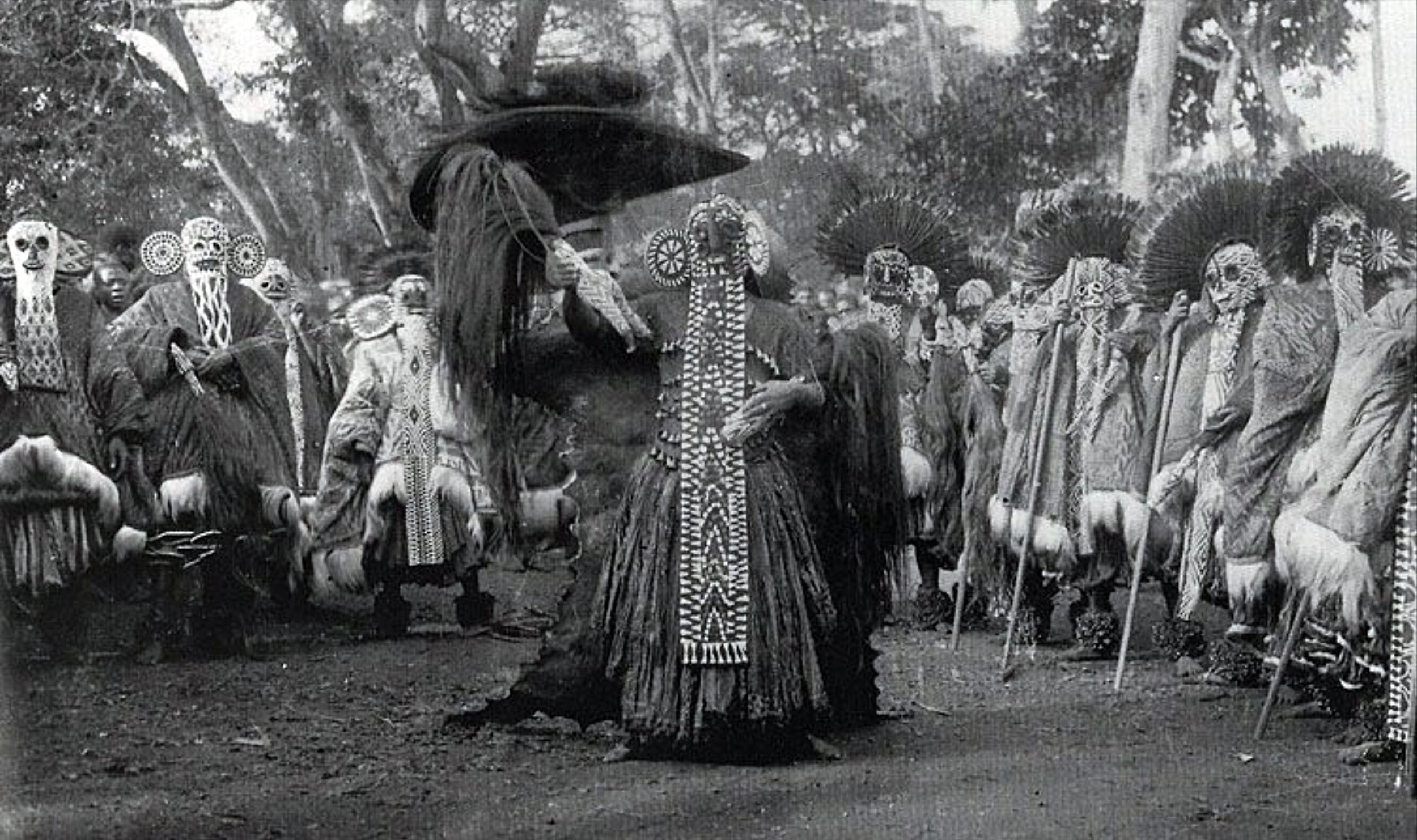Elephant Mask, Bamileke Peoples
Bamileke Peoples, Elephant (Aka) Mask, 20th century, cloth, beads, raffia, fiber, Cameroon
In the quiet halls of a museum, a beaded mask from the Bamileke People of Cameroon stands as a silent witness to a history of rituals, performances, and cultural richness. Once vibrant and alive, this artifact belonged to the Kuosi society, a group within the Bamileke community known for their dynamic dances and elaborate costumes. Today, housed in glass, it is a museum piece, separated from its original context, yet still radiating the energy of the performances it once adorned.
This beaded mask, once part of a costume worn by performers and attendees alike, held a sacred purpose—to honor the king and invoke social harmony. In its original form, it would have been accompanied by a red feather headdress, leopard skin felt, and a full-body costume, creating a visual and sensory spectacle. The elephant, a symbol of rule, was worn by court officials, title holders, and warriors, all of whom pronounced the power of the king through their association with this majestic creature.
The ritual dance of the Elephant Mask was a dynamic experience, a symphony of textures, patterns, movements, and sounds that echoed the rich cultural tapestry of the Bamileke People. The isosceles triangle, modeled after leopard skin patterns, adorned the mask, creating a visually striking composition. In the original performance, powerful members of the society now wear the mask, a symbolic passing of authority and tradition.
Even in its static state within the museum, the Elephant Mask exudes authority, wealth, and strength. Stylized noses or holes for mouths add a touch of mystique, while the long drapes of fabric mimic the floppy ears of an elephant. The costumes worn during performances, of exquisite quality and taste, become symbols of prestige, adding to the overall grandeur of the ritual.
This beaded masterpiece, exhibiting horror vacui, covers its surface entirely with beads and patterns, creating a mesmerizing visual impact. Some scholars argue that the colors of the beads carry significant meanings—black representing night and death, white symbolizing bones and ancestors, and red embodying life, blood, the king, women, renewal, and rarity.
The inclusion of cowrie shells, once a luxury and currency, transforms the mask into a visual testament of wealth and prosperity. It's as if the mask is adorned with money, reinforcing the regal stature of the king it honors. The connection between the king, leopards, and elephants is woven into the very fabric of this beaded marvel, emphasizing the ruler's role as a mediator between human spaces and the wilderness.
In the museum's quietude, the Elephant Mask invites contemplation—a journey back in time to the lively performances that once celebrated culture, tradition, and the powerful symbiosis between man and nature. Though it may be physically separated from its origins, the Elephant Mask remains a beacon of cultural heritage, radiating the vibrant energy of a community deeply rooted in its artistic expressions and rich symbolism.
